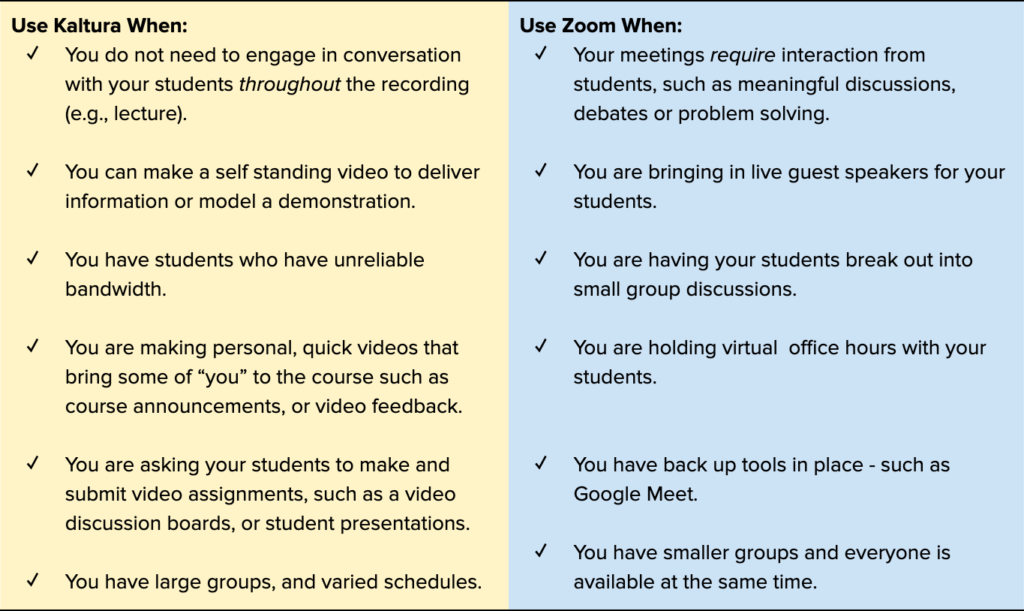Zoom vs. Kaltura: What’s the Difference?
Zoom is a live web-conferencing tool used for real-time communication and collaboration between participants (we refer to these as synchronous meetings). Zoom meetings can also be recorded.
Kaltura is a video streaming service to which all students, faculty, and staff have access. In addition, Kaltura has a built-in recorder that allows faculty to record videos on their own laptops and posts for students to watch on their own time (we refer to these as asynchronous meetings).
A quick way to think about Zoom vs. Kaltura is:
- Zoom is great for discussions.
- Kaltura is better for presentations and lectures.
- Zoom is best for small groups.
- Kaltura is best for large groups.
- Zoom is best when everyone can meet at the same time.
- Kaltura is best when everyone has a different schedule.
For example:
You hold a class MWF from 9-10 am but spend that time primarily lecturing or delivering content, with minimal interaction with your students other than an occasional question. Rather than replace this face-to-face meeting with Zoom meetings, think about some alternatives such as recording your lectures using Kaltura, putting them in your LMS/Brightspace course, having students watch the lectures, then assess their learning with a video quiz, assessment in Brightspace, or a discussion board.
However, if your class involves problem-solving, small group work, and whole class discussion – this would be better achieved through Zoom. In this case, you could still record the Zoom meeting and make it available to your class (this way students who may not have been able to connect can still watch the interactions).
As you review your course, prioritize what has to happen via Zoom, and explore ways to use Kaltura and other low bandwidth methods (like discussion boards or collaborative learning in Google Drive) to supplement your course materials.
Diversifying your course tools, assessment strategies, and access to materials will help students feel able to succeed. This will be especially true for students who may now have constraints in their schedule, and access to technology, or who may be sick and unable to attend regularly scheduled events.
Getting Started…

